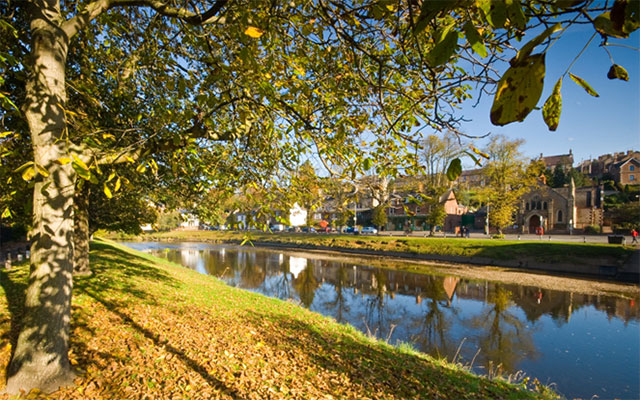
This question would make a great starter for 10 at any given transport geek’s pub quiz night
However, since we don´t have a pub nor a quiz, for that matter, to hand then this, dear readers, will be our topic for today: Transport deserts.
Just on the fringe of the Lake District National Park, the village of Eden has been named as England´s number one Public Transport Desert (source: England’s public transport deserts). With just 0.69 bus and rail stops per square mile, breathtakingly beautiful Eden is notoriously difficult to navigate by public transport.

At the other end of the scale, the most accessible public transport location is Nottingham, which boasts a combined bus & rail stop average of 60.33 per square mile.
So what is a transport desert?
Transport deserts refer to areas with limited or no access to public transportation, making it difficult for residents to travel to work, school, or other essential services. This lack of mobility can severely impact people’s ability to access employment and educational opportunities, leading to higher rates of unemployment and lower educational attainment.
It also limits social inclusion, as individuals in transport deserts may find it hard to participate in community events or social activities. Without reliable transportation options, people are more likely to experience social isolation and financial instability. This disproportionate effect often impacts lower-income communities, further widening existing inequalities. Addressing transport deserts is crucial for ensuring equal access to opportunities and fostering social cohesion in society

In rural areas there will be no tram lines re-opened, no light rail system installed nor a new metro line inaugurated, for many rural areas public transport buses remain – and are indeed set to remain – the key form of transport providing mobility and connection to essential services.
And yes we know that rural PT is thwarted with low ridership and high cost per passenger. So the question to be answered is
How can we best solve or alleviate the issue of transport deserts?
Or rather how can we make the current public transport resources we have in rural areas work in a more efficient manner?
Our mission is to break the downward spiral relating to long travel times, unattractive transport offer, reduced service, and the ensuing social exclusion this provokes in relation to transport poverty that is a hindrance to work and study opportunities, and also leisure activities for those older residents.

Read more about our DRT solutions for rural areas
So how can DRT solve the rural transport problem?
Transport deserts not only deepen regional inequality but also exacerbate issues of social isolation and economic marginalisation.
Unfortunately in the UK, transport deserts are increasingly common due to cuts in local bus services, rail line closures, and the consolidation of transport networks around profitable urban centres. This creates significant barriers for people without access to private vehicles—such as the elderly, young people, or low-income households—impacting access to employment, education, healthcare, and social activities.
Demand Responsive Transport (DRT) as one of the solutions
DRT systems offer flexible routing and scheduling, typically using minibuses or vans that can be booked via apps, websites, or phone calls. They aim to serve areas where fixed-route buses are no longer viable, particularly in low-density rural regions. These services can adjust routes based on user demand, offering more direct and timely travel compared to traditional buses. DRT has shown promise in improving mobility for underserved communities while potentially lowering operating costs and environmental impact through shared rides.
Whilst DRT schemes can bridge gaps in transport infrastructure, enhance mobility, and improve access to opportunities, helping to resolve many of the challenges faced by transport deserts, any such scheme should be well thought through with the target user in mind.
For this reason and this reason alone, DRT schemes still face several challenges as digital exclusion limits access for those without smartphones or internet connectivity. Public awareness and trust in new transport models can be low and the introduction of any transport model requires extensive user centric education and communication campaigns and activities. Operational costs, regulatory hurdles, and integration with existing public transport networks can also present obstacles to scalability.
Nemi as your partner for DRT
At Nemi we firmly believe that if implemented effectively, DRT can play a key role in reshaping inclusive, sustainable rural mobility across the UK. We currently have more than 50 rural DRT taxi and bus services across Spain
Read more about the proven success of Nemi´s rural DRT schemes
DRT, a proven solution to address the challenges faced by transport deserts
Increased access to employment and education: DRT can provide essential mobility for people in transport deserts, allowing them to travel to work, school, or training programs, where traditional public transport options may be sparse, unavailable or simply running at unsuitable times
Cost-Effective: Unlike fixed-route bus services, which may operate underutilized in rural or low-demand areas, DRT is more cost-efficient by serving areas based on demand, reducing the financial burden of running empty buses
Improved Social Inclusion: By providing transportation to people who might otherwise be isolated, DRT fosters community participation and allows individuals to attend social events, healthcare appointments, and local gatherings, promoting a sense of belonging and mobility independence
Increased Flexibility: DRT services can adjust their operations based on changing needs, offering greater flexibility for people with irregular work hours or students who need transport outside of typical schedules
Reduced Dependency on Private Vehicles: DRT can decrease reliance on private cars, which is often the only option in transport deserts, reducing congestion, environmental impact, and costs associated with car ownership
Better Coverage in Remote Areas: DRT can operate in remote or rural areas that are not feasible for conventional buses or trains, ensuring that even sparsely populated regions have access to essential transport services




